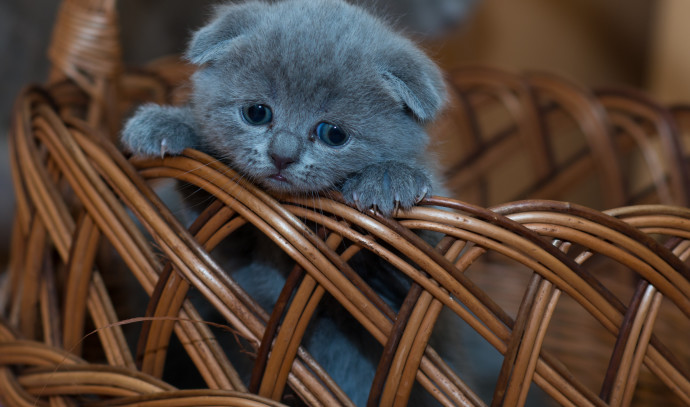While 20 cats have been confirmed to have been killed by the H5N1 subtype of Highly Pathogenic Avian Influenza (HPAI) in Poland in recent weeks, the source of the outbreak among the felines remains elusive.
The infections among cats were first reported last month, with the reports quickly spreading throughout Poland. The cases confirmed so far are located in distances separated by hundreds of kilometers.
Since the first case was confirmed, researchers have been working to discover the source of the outbreak.
Earlier this week, the Polish Gazeta Wyborcza newspaper reported that avian influenza had been found in raw poultry meat sold in groceries, although the scientists cited by the newspaper stressed that the report “distorts the meaning of the results obtained and can lead to panic and losses.”
The researchers included Krzysztof Pyrć – a professor at the Malopolska Center for Biotechnology of the Jagiellonian University in Krakow, Poland; Maciej Grzybek – a parasitologist at the Medical University of Gdansk; and Łukasz Rąbalski, a lecturer at the University of Gdansk.
Pyrć noted in a Twitter post that his team had found that one of the likely routes of infection for the cats was food, as the virus appeared suddenly and both indoor and outdoor cats in different locations, there were no cases of cat-to-cat transmission, and the genome sequences from the various cases were all very similar, indicating a single source of infection.
Oświadczenie.Szanowni Państwo, w jutrzejszej Gazecie Wyborczej @gazeta_wyborcza ma ukazać się tekst, który częściowo bazuje na naszej pracy. Ponieważ w tekście znajduje się nadinterpretacja wyników naszych badań, która wypacza sens uzyskanych wyników i może prowadzić do paniki… pic.twitter.com/r1eXz1U1nD
— Krzysztof Pyrc (@k_pyrc) July 3, 2023
The team of researchers decided to test the theory by asking the owners of infected cats to submit samples of the meat they ate. The researchers received five samples and found that one of the samples contained traces of the virus.
“Although it cannot be ruled out that the virus found its way into the meat samples later, or even the meat was contaminated by the owners with the virus developing in the cat’s body, it is also possible that the raw meat was the source of infection,” wrote Pyrć, noting that a case of frozen duck meat being contaminated with the same subtype was recorded in Germany in 2007.
“In view of the above, it seems reasonable to appeal to the veterinary services and sanitary inspection to examine the meat available in Poland and consider including meat testing for H5N1 influenza. This is crucial not only because of cats, but also because this virus is a threat to human life.”
“In addition, the Polish poultry industry accounts for almost 20% of the EU market, and the estimated value of meat exports is over EUR 3 billion. It is worth imagining the consequences for this sector of the economy, if it turned out that contaminated meat ended up in France, Italy, or Germany,” added the researchers.
Polish Agriculture Ministry stresses ‘Polish poultry is safe’
After the publication of the findings by the researchers, the Polish Agriculture Ministry held a press conference stressing that “Polish poultry is safe” and that “there is no risk to consumers.”
Referring to the article by Gazeta Wyborcza, the undersecretary of state in the Agriculture Ministry, Krzysztof Ciecióra, stated that “The information given in the press article that the avian influenza virus is found in raw poultry meat is unproven. No research confirms this.”
Ciecióra warned that such articles impact the Polish poultry sector, adding “It is therefore not surprising that in various ways attempts are being made to undermine trust in this very important sector of our economy.”
Pyrć also provided a statement to the press conference, saying that the claims that his team proved cats were infected with bird flu through contaminated meat is “not true.”
Polish Chief Veterinary Officer Paweł Niemczuk stressed that only healthy meat is placed on the market and that all meat is inspected before and after slaughter.
The Polish National Veterinary Research Institute announced earlier this week that all of the analyzed virus samples taken from the infected cats were very closely related to each other. The strain involved was found mainly in poultry in the Wielkopolska province and in wild birds throughout the country. A strain closely related to the one found in the infected cats was detected in a white stork at the beginning of June in the Tarnow district.
“This indicates that the H5N1 avian influenza viruses from cats analyzed so far originate from a single, unidentified source, related to the H5N1 viruses circulating in wild birds in recent weeks in Poland,” said the National Veterinary Research Institute.
The reports from Poland come as reports of mammals being infected with avian influenza continue to spread across the globe, with mass die-offs of seals and sea lions reported in Russia and the Americas and dozens of foxes, skunks, dolphins, raccoons, cats, ferrets and other mammals found to be infected as well.
Dogs, cats, and other pets have been affected by the outbreak in multiple countries as well, including the US and Canada.
Since 2021, Europe and the Americas have been suffering from a continuous outbreak of H5N1 avian influenza which has been described as “the largest-ever” outbreak on all three continents. The outbreak, as well as other strains of the virus, has also spread to other locations around the globe.
Thousands of wild birds, over 58 million domesticated birds, and nearly 200 mammals have been confirmed to have been affected by the bird flu in the US alone. In Europe, tens of thousands of wild and domestic birds were found to be infected in over 24 countries, with many sea birds affected.
Human cases of H5N1 have been detected in the past two years in the UK, US, Cambodia, Ecuador, and Chile.



